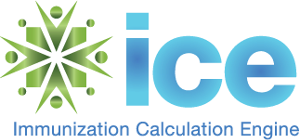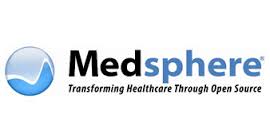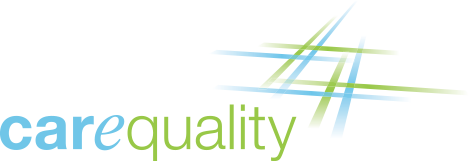health information exchanges (HIEs)
See the following -
Is Cloud Faxing the Solution to the Health IT Usability and Interoperability Crisis?
 The Healthcare industry is in profound crisis as the HITECH Act of 2009 led medical facilities across the United States to spend in excess of $3 trillion on the purchase and implementation of expensive electronic health records (EHRs) under the Meaningful Use program. Yet, the most fundamental goals of electronic records Nirvana that were promised have not been achieved. For multiple reasons, EHRs have turned out to lack usability and be non-interoperable. In fact, most monopoly EHR vendors are engaged in what is commonly called “data blocking.” In most cases physicians are unable to obtain medical records for the patients they are seeing and patients have a hard time getting a hold of their own medical records. That means that the medical records are not available at the most important moment, the caregiver/patient encounter, and are not available to the patients themselves and their family members.
The Healthcare industry is in profound crisis as the HITECH Act of 2009 led medical facilities across the United States to spend in excess of $3 trillion on the purchase and implementation of expensive electronic health records (EHRs) under the Meaningful Use program. Yet, the most fundamental goals of electronic records Nirvana that were promised have not been achieved. For multiple reasons, EHRs have turned out to lack usability and be non-interoperable. In fact, most monopoly EHR vendors are engaged in what is commonly called “data blocking.” In most cases physicians are unable to obtain medical records for the patients they are seeing and patients have a hard time getting a hold of their own medical records. That means that the medical records are not available at the most important moment, the caregiver/patient encounter, and are not available to the patients themselves and their family members.
- The Future Is Open
- Login to post comments
Is the Technology Gap the Reason Why Medical Errors are the 3rd Leading Cause of Death in the US?
 Hardly a day goes by without some new revelation of an information technology (IT) mess in the United States that seems like an endless round of the old radio show joke contest, “Can You Top This” except that increasingly the joke is on us. From nuclear weapons updated with floppy disks, to critical financial systems in the Department of the Treasury that run on assembler language code (a computer language initially used in the 1950s and typically tied to the hardware for which it was developed), to medical systems that cannot exchange patient records leading to a large number of needless deaths from medical errors.
Hardly a day goes by without some new revelation of an information technology (IT) mess in the United States that seems like an endless round of the old radio show joke contest, “Can You Top This” except that increasingly the joke is on us. From nuclear weapons updated with floppy disks, to critical financial systems in the Department of the Treasury that run on assembler language code (a computer language initially used in the 1950s and typically tied to the hardware for which it was developed), to medical systems that cannot exchange patient records leading to a large number of needless deaths from medical errors.
- Login to post comments
Major Upgrade to Innovative Open Source Immunization Forecaster Released
 Innovative open source software, originally developed for public health, is freely available to EHR and PHR systems to support clinical decision support for immunizations...ICE is a state-of-the-art open-source software system that provides clinical decision support for immunizations for use in Immunization Information Systems (IIS), Electronic Health Record (EHR) and Personal Health Record (PHR) Systems...HLN will be presenting this new version this week at the annual meeting of the American Immunization Registry Association (AIRA) and week of August 20 at the CDC Public Health Informatics Conference Read More »
Innovative open source software, originally developed for public health, is freely available to EHR and PHR systems to support clinical decision support for immunizations...ICE is a state-of-the-art open-source software system that provides clinical decision support for immunizations for use in Immunization Information Systems (IIS), Electronic Health Record (EHR) and Personal Health Record (PHR) Systems...HLN will be presenting this new version this week at the annual meeting of the American Immunization Registry Association (AIRA) and week of August 20 at the CDC Public Health Informatics Conference Read More »
- Login to post comments
Number of Public HIEs Drop, Bringing Viability into Question
 Despite federal funding that aided their creation, the number of community and state health information exchanges is declining as HIEs struggle to remain financially viable now that seed money has dried up. Those are among the results of a new national survey published in the July issue of Health Affairs that tracked community and state HIE efforts soon after federal funding ended. “We found 106 operational HIE efforts that, as a group, engaged more than one-third of all U.S. providers in 2014,” states the study’s authors...
Despite federal funding that aided their creation, the number of community and state health information exchanges is declining as HIEs struggle to remain financially viable now that seed money has dried up. Those are among the results of a new national survey published in the July issue of Health Affairs that tracked community and state HIE efforts soon after federal funding ended. “We found 106 operational HIE efforts that, as a group, engaged more than one-third of all U.S. providers in 2014,” states the study’s authors...
- Login to post comments
Obamacare Victory Spells More Work For Healthcare CIOs
First, a bit of transparency: I believe in universal health coverage and don't think the word "socialized," as in socialized medicine, is a four-letter word. How exactly the nation should roll out that universal coverage--without creating a bureaucratic nightmare or bankrupting the country--is beyond my expertise, but in principle it's the right direction. Read More »
- Login to post comments
ONC Timeline for TEFCA Going Live in 2022
 Today we are pleased to announce the timeline for the Trusted Exchange Framework and Common Agreement (TEFCA). The 21st Century Cures Act, signed by President Obama in 2016, calls on ONC to "develop or support a trusted exchange framework, including a common agreement among health information networks nationally."... The timeline released today-for completion of the Trusted Exchange Framework, the Common Agreement Version 1 and the Qualified Health Information Network (QHIN) Technical Framework (QTF) Version 1-establishes our goal to have this new network open for participation in the first quarter (Q1) of calendar year 2022.
Today we are pleased to announce the timeline for the Trusted Exchange Framework and Common Agreement (TEFCA). The 21st Century Cures Act, signed by President Obama in 2016, calls on ONC to "develop or support a trusted exchange framework, including a common agreement among health information networks nationally."... The timeline released today-for completion of the Trusted Exchange Framework, the Common Agreement Version 1 and the Qualified Health Information Network (QHIN) Technical Framework (QTF) Version 1-establishes our goal to have this new network open for participation in the first quarter (Q1) of calendar year 2022.
- Login to post comments
ONC, CMS to Take Part in Provider Data Accuracy Alliance
A multi-stakeholder alliance convened by CAQH will meet to discuss and develop a roadmap for improving provider data accuracy throughout the summer of 2017. Accurate provider information improves the efficiency of various fundamental processes in healthcare ranging from paying claims to procuring provider directories. The Provider Data Action Alliance comprises representatives from provider organizations, health information exchanges (HIEs), federal agencies, and health systems...
- Login to post comments
Open Health Tools Unites Aurion and FHA CONNECT
Open Health Tools (OHT), an organization that provides leadership for open-source communities in the health IT space, announced today that governance of the CONNECT project is migrating to become an OHT Project with active involvement of both the Aurion and Federal Health Architecture (FHA) CONNECT teams. These teams are merging their respective source codes to form a unified platform. Read More »
Open Source EHR Company Achieves 48 Percent Revenue Growth in 2016
 Medsphere Systems Corporation, the leading provider of affordable and interoperable healthcare information technology (IT) solutions and services, is welcoming the new year with excitement and anticipation following a busy and historic 2016. Significant recent achievements include an expansion of company products and services as well as a record number of new clients and unprecedented revenue growth. The company’s ongoing efforts to make affordable healthcare IT more widely available have resulted in specific indicators from the previous calendar year of growth and success...
Medsphere Systems Corporation, the leading provider of affordable and interoperable healthcare information technology (IT) solutions and services, is welcoming the new year with excitement and anticipation following a busy and historic 2016. Significant recent achievements include an expansion of company products and services as well as a record number of new clients and unprecedented revenue growth. The company’s ongoing efforts to make affordable healthcare IT more widely available have resulted in specific indicators from the previous calendar year of growth and success...
- Login to post comments
Patient Record Sharing Increases Using Carequality Interoperability Framework
 Nationwide health data sharing takes another leap forward as the early adopters of Carequality announced they’ve made it easier to exchange data between different electronic health record systems (EHRs), record locator services (RLS), and health information exchanges (HIEs), leveraging a central provider directory and common set of rules. At select sites, providers using athenahealth®, eClinicalWorks, Epic, HIETexas, NextGen and Surescripts are now sharing health information with other providers using the Carequality Interoperability Framework...
Nationwide health data sharing takes another leap forward as the early adopters of Carequality announced they’ve made it easier to exchange data between different electronic health record systems (EHRs), record locator services (RLS), and health information exchanges (HIEs), leveraging a central provider directory and common set of rules. At select sites, providers using athenahealth®, eClinicalWorks, Epic, HIETexas, NextGen and Surescripts are now sharing health information with other providers using the Carequality Interoperability Framework...
- Login to post comments
Patient-Controlled Data: The Key to Interoperability?
 Mr. Nagpal argues the issue here is one of who controls patient data — is it the patients themselves or care providers and vendors? He says if patients control their data — choose who gets access to it and see who's doing what with it — many of the proposed barriers to interoperability would dissolve. "Being able to access our own information from across our care team in a joined up manner, and then being able to determine who can access that information and for what uses, I think of these as fundamental rights," Mr. Nagpal says. "Given these rights, each one of us can grant any member of our care team, including our friends and family, researchers and any innovator with an interesting solution, with access to our data under our control"
Mr. Nagpal argues the issue here is one of who controls patient data — is it the patients themselves or care providers and vendors? He says if patients control their data — choose who gets access to it and see who's doing what with it — many of the proposed barriers to interoperability would dissolve. "Being able to access our own information from across our care team in a joined up manner, and then being able to determine who can access that information and for what uses, I think of these as fundamental rights," Mr. Nagpal says. "Given these rights, each one of us can grant any member of our care team, including our friends and family, researchers and any innovator with an interesting solution, with access to our data under our control"
- Login to post comments
Plug and Play Healthcare: Open Middleware and the Emergence of a Functional Interoperability Framework
 “A middleware architecture has been shown to be the best technological solution for addressing the problem of EHR interoperability. The middleware platform facilitates the transparent, yet secure, access of patient health data, directly from the various databases where it is stored. A server-based middleware framework supporting access to the various patient health data stores allows for a scalable, unified and standardized platform for applications to be developed upon. The middleware architectural design has been successfully used to link data from multiple databases, irrespective to the database platform or where the database is located,” says Voltz. Read More »
“A middleware architecture has been shown to be the best technological solution for addressing the problem of EHR interoperability. The middleware platform facilitates the transparent, yet secure, access of patient health data, directly from the various databases where it is stored. A server-based middleware framework supporting access to the various patient health data stores allows for a scalable, unified and standardized platform for applications to be developed upon. The middleware architectural design has been successfully used to link data from multiple databases, irrespective to the database platform or where the database is located,” says Voltz. Read More »
- Login to post comments
Population Health Management Becoming a Priority for Providers, but Many Struggle With Stop-Gap Solutions and Lack of Infrastructure, Says Latest Black Book Survey
 Black Book’s most recent report on the state of population health management (PHM) reveals that it is among the fastest-growing areas in the healthcare IT space and several effective end-to-end solutions emerging. Record PHM spending underscores its increasing importance with a reported $8B invested in digital health in sum in 2016, with the majority going to population health and patient experience tools. But even as PHM solutions are quickly becoming a priority for healthcare organizations, in Q1 2017, 81% of providers are tackling population health projects without a strategic technology purchase that meets all their needs...
Black Book’s most recent report on the state of population health management (PHM) reveals that it is among the fastest-growing areas in the healthcare IT space and several effective end-to-end solutions emerging. Record PHM spending underscores its increasing importance with a reported $8B invested in digital health in sum in 2016, with the majority going to population health and patient experience tools. But even as PHM solutions are quickly becoming a priority for healthcare organizations, in Q1 2017, 81% of providers are tackling population health projects without a strategic technology purchase that meets all their needs...
- Login to post comments
Regenstrief Institute Hopes to Create Comprehensive Patient Profile by Leveraging FHIR
 In the quest for interoperability, Regenstrief Institute, the Indianapolis-based healthcare research and informatics organization, is piloting a heavily touted method of compiling healthcare information electronically. The not-for-profit Regenstrief’s Center for Medical Biomedical Informatics has developed a platform for merging data from different electronic health records systems to produce a comprehensive patient health profile for hospitals and physicians...
In the quest for interoperability, Regenstrief Institute, the Indianapolis-based healthcare research and informatics organization, is piloting a heavily touted method of compiling healthcare information electronically. The not-for-profit Regenstrief’s Center for Medical Biomedical Informatics has developed a platform for merging data from different electronic health records systems to produce a comprehensive patient health profile for hospitals and physicians...
- Login to post comments
Scenarios for Health Care Reform (Part 1 of 2)
 All reformers in health care know what the field needs to do; I laid out four years ago the consensus about patient-supplied data, widespread analytics, mHealth, and transparency. Our frustration comes in when trying to crack the current hide-bound system open and create change. Recent interventions by US Republicans to repeal the Affordable Care Act, whatever their effects on costs and insurance coverage, offer no promise to affect workflows or treatment. So this article suggests three potential scenarios where reform could succeed, along with a vision of what will happen if none of them take hold...
All reformers in health care know what the field needs to do; I laid out four years ago the consensus about patient-supplied data, widespread analytics, mHealth, and transparency. Our frustration comes in when trying to crack the current hide-bound system open and create change. Recent interventions by US Republicans to repeal the Affordable Care Act, whatever their effects on costs and insurance coverage, offer no promise to affect workflows or treatment. So this article suggests three potential scenarios where reform could succeed, along with a vision of what will happen if none of them take hold...
- Login to post comments